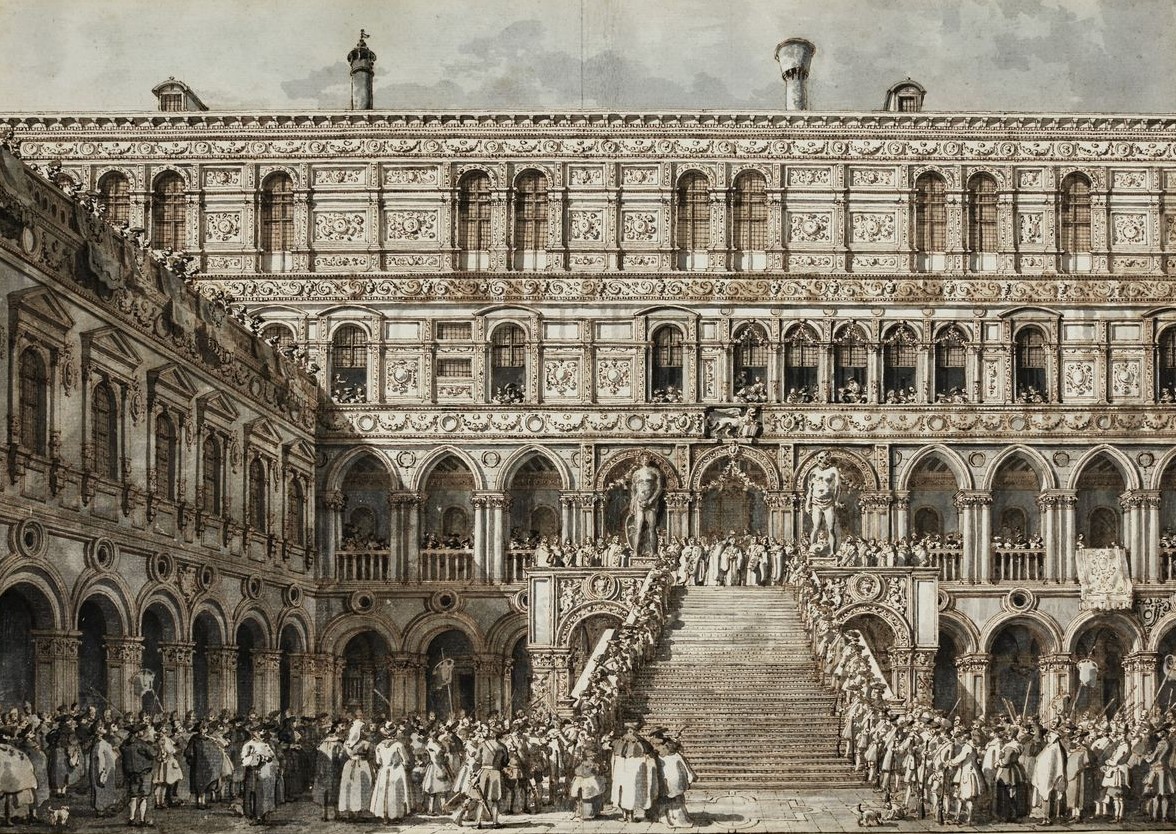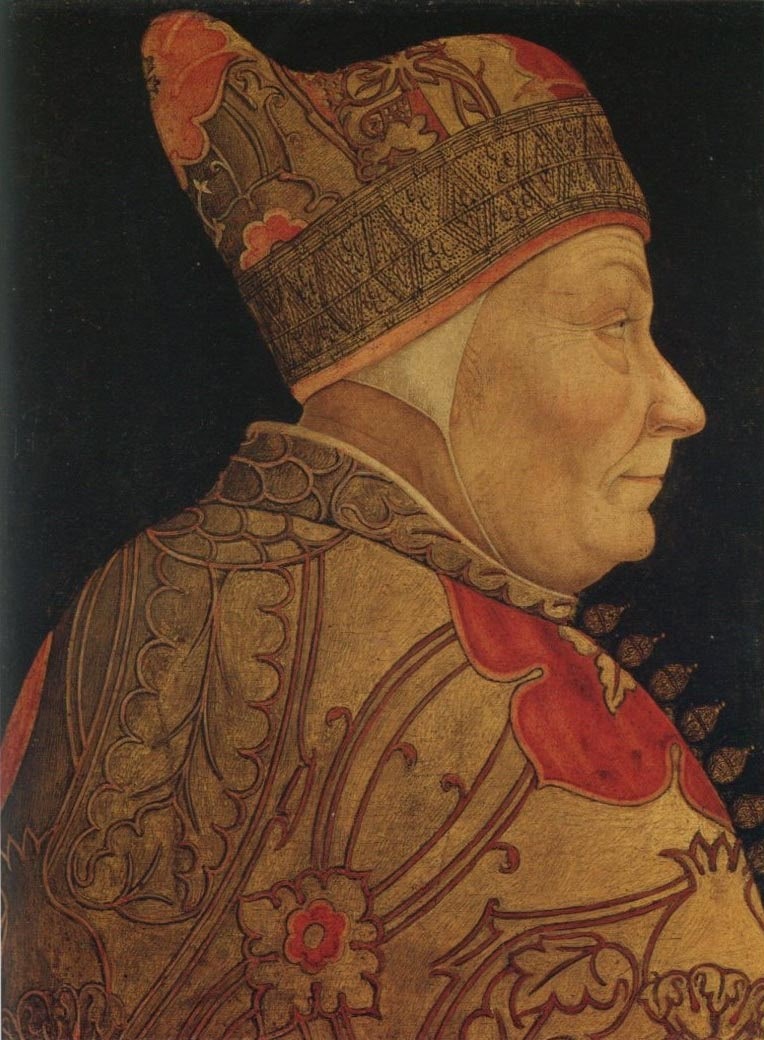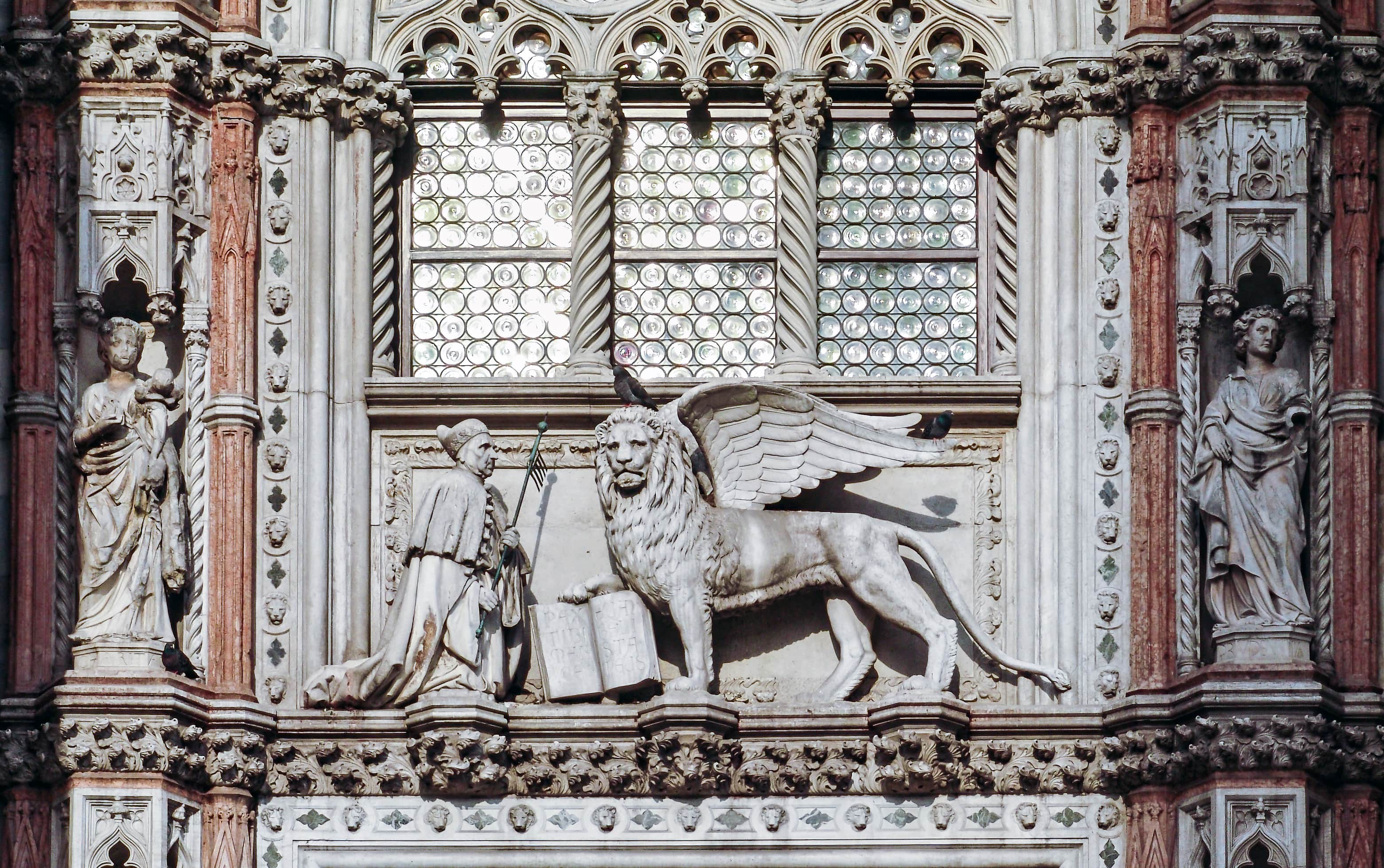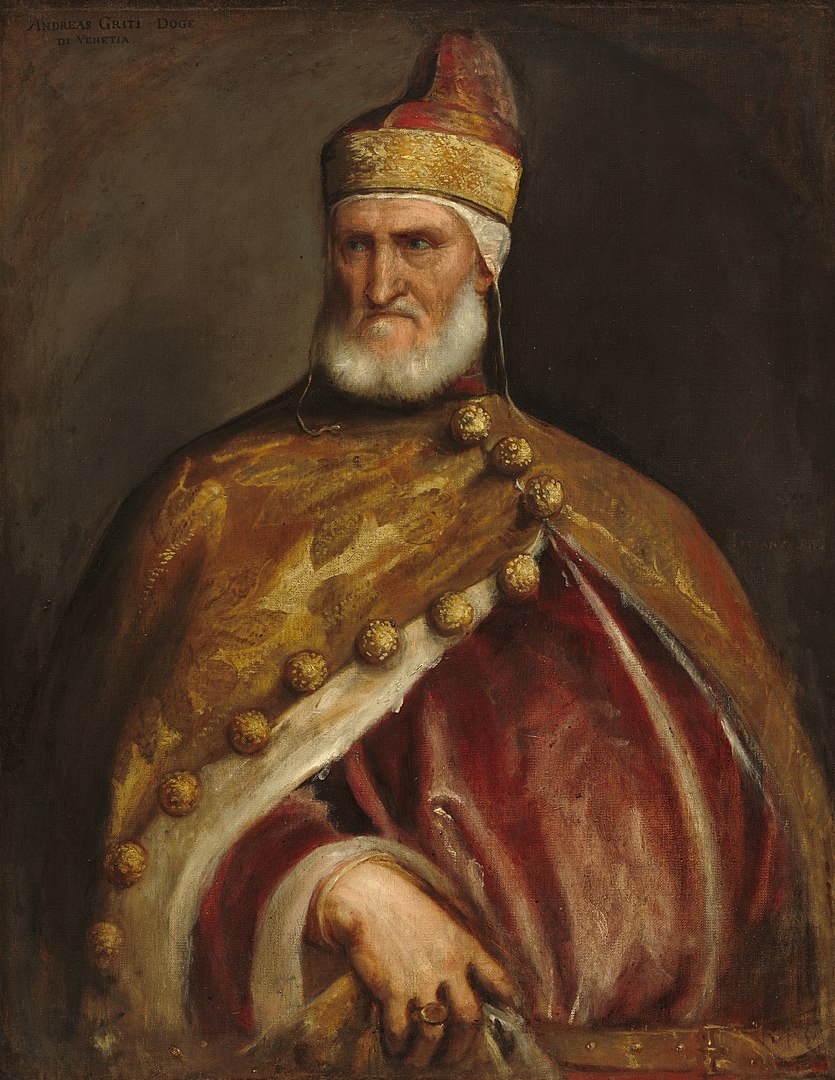For centuries, Venice has been a small city capable of incredible actions. In a troubled political chessboard, scattered of intrigues, power games, wars, and conflicts, the city has been threatened by powerful players of different nature, from other city-states to the biggest pawns, such as kings, emperors, and popes. Nevertheless, it managed for more than thousand years to hold a central position, checkmating the entire Mediterranean Sea.
It made it always with a special charm, which came from an elegance and a luxury built over time. Its charisma was enhanced by a population of merchants and sailors, which donated to the City lively vibes. From the Medieval Ages to the rise of Napoleon, Venice preserved its independence and cultural identity, becoming one of the most interesting entities to discover in the annals of the European history.
Beside its naval dominance, the great deal of artists walking down the calli and the aura of mystery and glamour, there is a trait of its social life being extremely interesting: the institution of the doge, the Venetian figure recalling a particular type of duke. This was the highest political office of the city, a role desired by all the patrician families of Venice, due to the symbolic honour and the great influential strength it drew.
Doge, the symbol of sovereignty in Venice

The presence of the doge lasted in Venice for 1100 years, during which 120 figures succeeded one another, after deaths, abdications, conspiracies, and depositions. Indeed, even though it was the ultimate political power of Venice, the appointee always had to deal with the presence and the authority of the Venetian aristocracy, the real ruling figure, which used to work in order to limit and strictly control the doge.
This institution changed over time, following the flow of events. Venice was still under the influence of the Eastern Roman Empire when Paolo Lucio Anafesto was elected the first doge, in 697. He did not have many powers; indeed, he just held a basic military control over the city and had to follow to the jurisdiction of Ravenna. Yet, the geographical position was strategic, and some noble Venetian families were getting ready, in their spirits and in their pockets, to gain more and more autonomy. The outcome was that, in 742, Venice run itself the election of the doge, setting off the transformation of the city in a ducal state.
At this stage, doges had extensive powers and tried constantly to make the role hereditary and provide unlimited supremacy to their family, but all their attempts always failed, and the citizens maintained their rights over the office. At the beginning of the new millennium, more precisely in 1032, the rich lineages of Venice, which were the ones electing and checking on the doges, had become a dominant mercantile aristocracy and had already started the subversive process of transformation of the city into an oligarchy. When, that year, Venice was proclaimed “republic”, new political bodies took over many of the doge’s functions, so as to narrow down his authority and have him subjected to laws. In order to legitimate this dominance of the aristocracy over the doge, a legend was established during this period. It claimed that the first doge was elected by 12 ancient Venetian families, as not a sovereign, yet as a primus inter pares. This role of main Venetian representative has been held true by the doges until the last one, Ludovico Manin, who was deposed in 1797 by Napoleon, when he conquered northern Italy.
Even though a great deal of powers lay in the hands of the aristocracy group, the position involved many duties. The ultimate function was to represent officially Venice and exhibit its greatness during public ceremonies and diplomatic relationships with foreign states. Moreover, during peaceful times, the doge was asked to preside over the political councils, voting when necessary. Yet, his vote was worth “one”, so as much as the votes of all the other members. During war time, instead, he was in charge of the fleet and he had to lead the army to defend Venice from the enemy. Finally, his position also concerned the religion sphere, being the chief of the Church in Venice, alongside bishops and princes of the other cities and states. This particular characteristic has been fundamental in history, indeed, being part of the Church of Rome, yet leader of it in his “home”, has been beneficial for many figures escaping Catholic dogmas, such as Galileo Galilei.
120 doges entered the Doge’s Palace throughout the centuries and each of them gave and took something from Venice. Some decorated the city, others boosted its prestige, whereas some tried to subvert it and others led it towards its decline. Several have been more important than others, because of the times when they lived, or because of their achievements, or their commitment to Venice.
Here the stories of probably the two most illustrious doges of the Renaissance, Francesco Foscari and Andrea Gritti, who played a fundamental role for the Republic of Venice and its international splendour, through battles, culture, diplomacy, and witty ideas.
Francesco Foscari and the great expansion of Venice

In the 14th century, Francesco Foscari got elected 65th doge of Venice. His mandate has been the longest, 34 years. Under his leadership, the Republic faced wars, conquers, natural disasters and, ultimately, it managed to reach its maximum expansion. Foscari came from the namesake family of Foscari, an ancient patrician lineage established during the Late Middle Ages. His father, Nicolò, was a wealthy landlord who had increased his assets working as a merchant. He was, most probably, truly glad when his son decided to enter politics, seeing it as the way to ensure privileges and support to the family. Indeed, Francesco, who was born in 1373 in Venice, was never involved in the merchant world and, whereas devoted his entire life to the public career.
His climb to success started in 1412, when he was ambassador at the court of Sigismund of Luxemburg, the king of Hungary and future Holy Roman Emperor. That year, the king decided to start a campaign to conquer Dalmatia, so he moved his army, threatening the nearby Venice. Francesco immediately flaunted his diplomatic skills, stipulating the peace between the two sides within one year. His strategic manoeuvre brought him to be offered a seat in the “Collegio dei Savi”, a sort of board of ministers, and to accept the position of “Procuratore di San Marco” little later. In 1423, finally, his career reached its peak, when the 15th of April he was elected doge of Venice.
From that moment, Francesco held the office for almost his entire life, dealing with important successes, dark moments, revenges, and several enemies. His mandate was pretty aggressive, bold, and based on conquests and territorial expansion. Indeed, firstly he used the fleet to win Thessaloniki, in Greece, over the Ottoman Empire. Simultaneously, he planned to initiate a conflict against Filippo Maria Visconti, duke of Milan. Milan and Venice had been weaving a positive relationship for years, yet the doge’s expansionistic aims led Venice to change its position in the network of power. When Florence showed up to ask for a support in its conflict against Milan, Foscari saw it as an excuse to reach his goals of growth, convincing Venice to embrace his view. This was the beginning of long and ruinous wars with Milan, called “the Wars of Lombardy”, which from 1423 to 1454, constantly changed the political hegemony of North Italy. Foscari managed to annex some territories in the mainland, expanding Venice greatly, up to the bank of the river Adda and spreading his supremacy over the whole Veneto, Friuli Venezia Giulia, and an important part of Lombardy. Unfortunately, Foscari did not take into consideration the premonition of his predecessor Tommaso Mocenigo, who, in his farewell letter, warned Venice with prophetic words “Beware of the desire to take what belongs to others and wage unjust wars for which God will destroy you”.
Indeed, after a first moment of glory, these wars troubled the Republic with defeats, money loss and destruction. The discontent and mistrust for the doge culminated in an act of violent protest: Andrea Contarini attacked Francesco and wounded his face with a dagger. The doge felt this outrage as the proof of the loss of supremacy over his citizens and decided to abdicate. Yet, Venice persuaded him to keep his office.
In the following years Foscari obtained some satisfactions, such as the investiture of the conquered lands to Venice by the Emperor Sigismundus, the reconstruction of Doge’s Palace and the creation of the Porta di Carta on which he was portrayed kneeling next to the Lion of San Marco, the renovation of “Casa delle due Torri”, which became the today university venue Ca’Foscari. But he had to also stand many displeasures, such as the earthquake in 1451, the frozen lagoon, which paralyzed Venice for most of the winter in 1431, the plague, which killed all of his sons beside Jacopo, the loss of Thessaloniki and dramatic conflicts with other aristocratic families which led to the exile, conviction and ultimately to the death of his last son. Finally, in 1454, Venice, Florence, and Milan stipulated the “Pace di Lodi” and put a stop to the endless war in the North of Italy. Francesco had to forget his dreams of expansion and tried to run the city for other three years, dealing with internal adversaries, conspiracies, and palace intrigues, until 1457, when his enemies ultimately compelled him to abdicate. He died just few days later, the 1st of November. A truly unfair end for a man who devoted his entire life to the destiny of his city and, in spite of everything, who managed to reward it with lands and power.

Andrea Gritti kept Venice alive

The biography of the 77th doge of Venice looks like a real novel, teemed with adventures, travels and plot twists. Indeed, Andrea Gritti was a man of great ambitions, brave and curious, the perfect character of an exciting life. He has been statesman, ambassador, commander, but also art lover and merchant. He was born in Bardolino, within the province of Verona, in 1455, and he descended from a rich family of merchants. He studied philosophy at Padua University and, since a young age, he was introduced to the foreign world by his grandfather, Triadano Gritti, who was an influential politician of Venice and who brought the young man with him during his diplomatic trips. Soon Andrea got interested in the discovery of different cultures, languages and habits and decided to move to Constantinople to work as merchant. There, thanks to his audacity and an inner curiosity for Byzantine lifestyle, he made his way through the local elite, becoming close friend with the several statesmen of the Empire and got acquainted even with the Sultan Bayezid II. Gritti spent in the East more than twenty years, constantly boosting his influential status and earning a great deal of money, using connections and acuity.
At the beginning of the 16th century, however, the beneficial relationship between Venice and the Ottoman Empire fell abruptly apart and Andrea found himself between two burning fires. He loved Constantinople, yet he was also loyal to his motherland. Therefore, during the conflict, he decided to help Venice by sneaking information; once nailed, he got incarcerated and sentenced to death. Yet, after three years of detention, a lucky event happened: a lightning hit the main war depot of the city. This random accident was judged as the God’s punishment for mistreating the Venetian merchant, and thus, the blessed man was immediately released. Once out of jail, Gritti operated as mediator between the two states and managed to close the peace deal.
The same year, 1503, he decided to move back to Venice and start a military and political career. However, just few years later, in 1508 a terrible threat loomed over the Republic. Its main enemies, named France, Spain, Hungary, the Emperor, Florence, and other Italian city-states, all together agreed upon an alliance, the “Cambrai League”, and aim to destroy Venice. The war begun and on the 14th of May of 1504, Gritti took part to the enormous defeat in the battle of Agnadello, which led to the immediate dissolution of the Venetian state. The helpless lagoon, indeed, saw all its territories in the mainland disappearing one by one, and its army vanishing. Yet, as usual in Gritti’ story, this debacle marked his final ascend to power. During the following ten years, Andrea gathered together the leftovers of the army and won back, battle after battle and siege after siege, each land gone in Agnadello.
Finally, he could come back to Venice and enter the city as a winner. Now, there was only one last thing to achieve, the dogeship. Eventually, Gritti was elected doge in 1523, yet his victory has not been either easy or taken for granted, he toiled for it! Indeed, even though, in Venice, everyone esteemed his great military skills, only few appreciated his personality, considered despotic and arrogant. Nevertheless, after exactly 100 years from the election of Francesco Foscari, he managed to obtain the dreamed position. From that moment on, Gritti committed himself to the glory of Venice and worked hard to ensure a beneficial administration. His plan was to bring innovations and changes in the city and to turn it into a modern hub of culture and progress.
Even if strongly limited by the aristocratic oligarchy, he fought for the poorest classes and for the improving of their conditions. For example, he granted public health assistance for the lowest classes and lower the price of his wheat in order to allow anyone to afford it. Moreover, due to his background packed with wars and battles, he strived for peace and alliances with the surrounded states, believing that it could be the best option for a still wounded Venice. Finally, he designed the project of “Renovatio Urbis”, in order to transform the city into an international metropolis. Thus, he promoted the construction of new buildings, such as Palazzo dei Casserlenghi, and he aimed to convert the city centre, from the medieval town it was, into a classical forum. He arranged the renovation of Saint Mark Square, calling the architect Sansovino to create the Marciana Library, the Loggia of the Bell Tower, and the Mint. He thought also about the Doge’s Palace, hiring Titian to work on the interiors. His ultimate goal was to donate to Venice the image of power and strength, that it had recently lost. Gritti carried on his mandate with efforts and passion until his death, occurred the 28th of December of 1538.
These are the fascinating stories of two doges out of 120, in the history of Venice. They stood out for their capabilities, their peculiar personalities and for their ambitions. However, what may link these two men the most is their love and attachment for Venice, which has been the main driving force of their good administration. They struggled and even died for their city: they fought in the name of independence and freedom... the two characteristic traits of this city-state, so tiny and yet, so powerful and enduring.










Lascia un commento